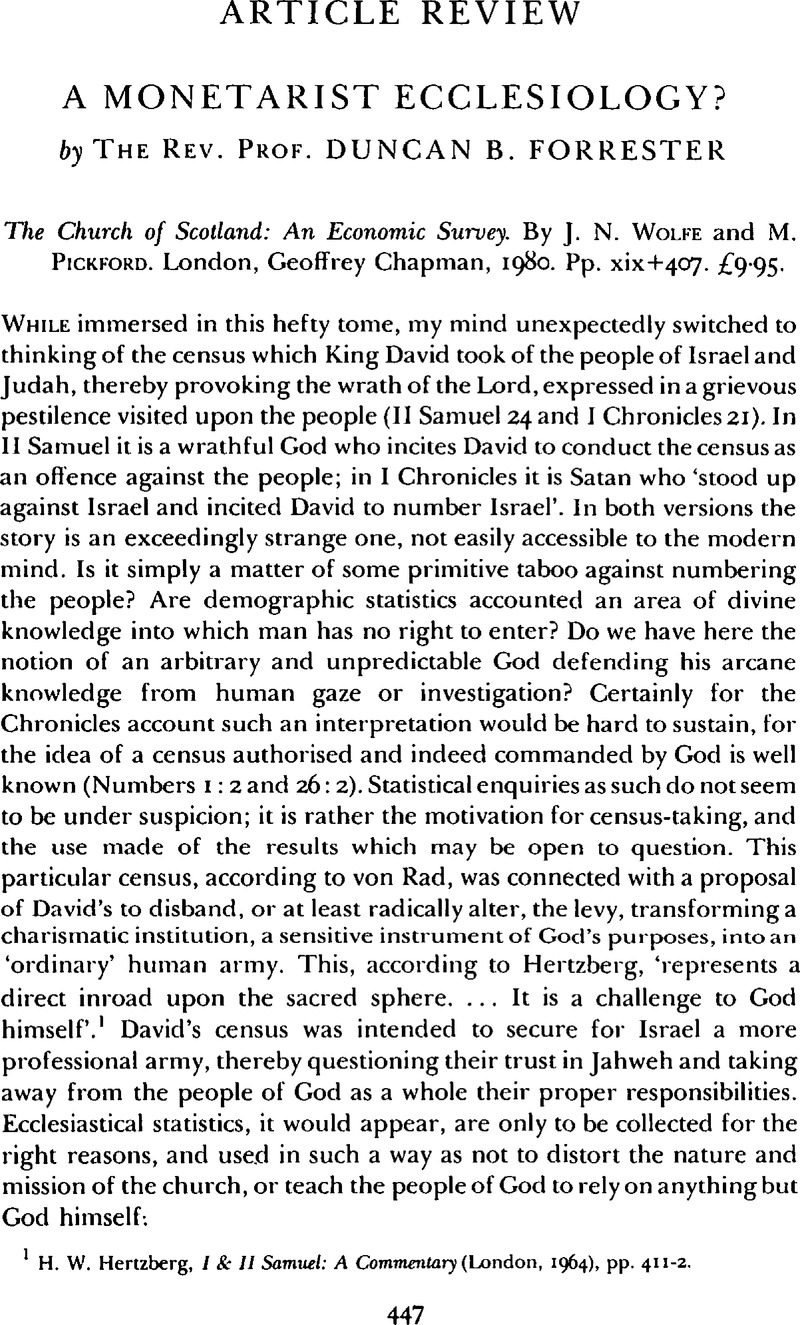No CrossRef data available.
Published online by Cambridge University Press: 02 February 2009

page 447 note 1 Hertzberg, H. W., I & II Samuel: A Commentary (London, 1964), pp. 411–412Google ScholarPubMed.
page 449 note 2 See, for example, Boulard, F., An Introduction to Religions Sociology (London, 1960)Google Scholar.
page 452 note 3 For example, Currie, Robert, Gilbert, Alan and Horsley, Lee, Churches and Church-Goers: Patterns of Church Growth in the British Isles since 1700. (Oxford 1977)Google Scholar.
page 455 note 4 As a symptom of the failure to understand the ethosor history of the Church of Scotland, consider the following note: ‘The relative infrequency in the holding of Communion in the Church of Scotland compared with the Church of England and the Roman Catholic Church is said to have arisen from Knox's insistence that the service should resemble the Last Supper as closely as possible, e.g., to the extent that members should sit around a large table covered with a white table-cloth. As a result, it was only possible for a limited number of members of the congregation to attend each service, so that each member came to attend Communion only a few times each year’ (p. 96).